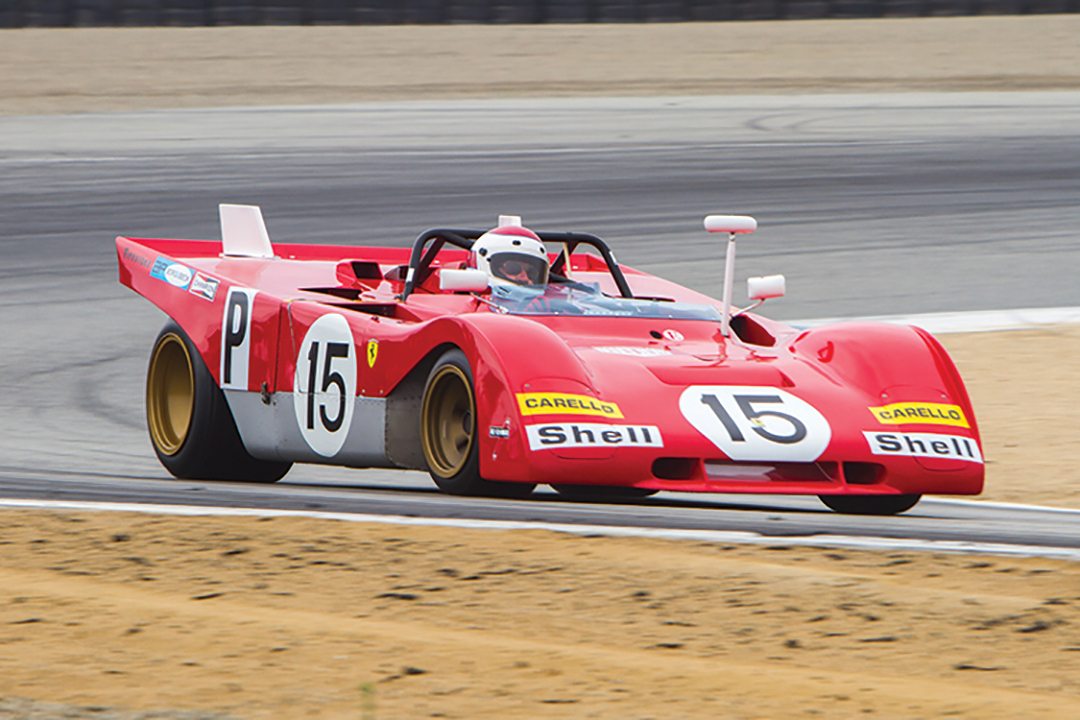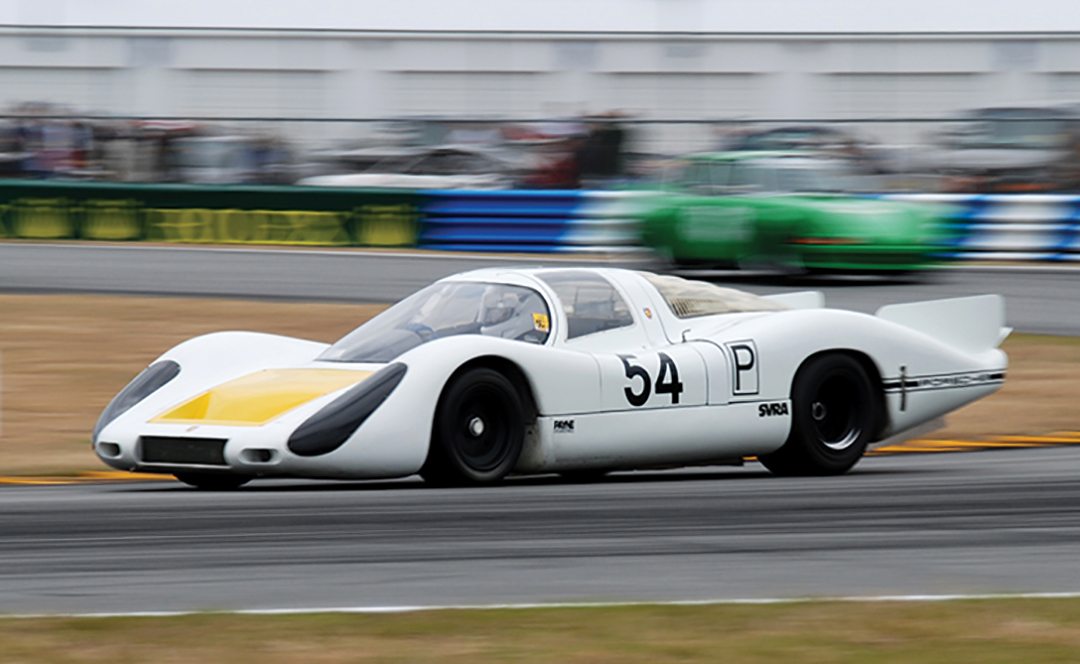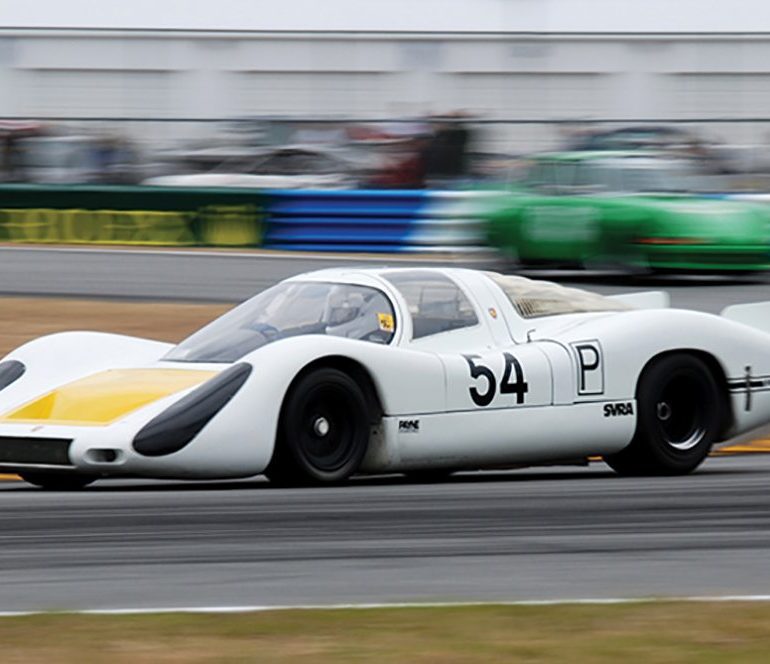The FIA sports prototypes were some of the most exciting purpose-built racing cars ever designed. They competed under the regulations set forth by the FIA (Federation International Automobile) in the International Championship of Makes from 1964-1971, and the World Championship of Makes from 1972-1981. The regulations changed somewhat as the years passed, 5.0-liter engines then 3.0- liter engines, etc., but the concept remained the same: to allow manufacturers to design the most fascinating, technically advanced sports racing cars the world had seen. Then have them compete in a World Championship, which included racing in the great endurance races such as the 24 Hours of Le Mans, the Nürburgring, Spa and Monza 1000 Kilometers and the Targa Florio. Alfa Romeo, Alpine Renault, Ferrari, Ford, Lola, Matra and Porsche, all designed very lightweight, successful sports prototypes to compete in the World Championship. From this came the Alfa Romeo, Tipo 33/12, Ferrari 512M, Ford GT40, Matra 670 and Porsche 917. They were driven by the world’s best drivers at a time when Formula One drivers still enjoyed driving in sports car races. Today FIA sports prototypes qualify to race in many great historic events such as the Le Mans 24 Hour Classic, Classic Endurance Series and the Rolex Monterey Motorsports Reunion. Due to their technology, great designs, eligibility and low production numbers, FIA sports prototypes have steadily been increasing in value.
1972 Ferrari 312PB

For 1972, new regulations were written governing the World Sports Car Championship. Gone were the five-liter cars and in was a new three-liter formula. Ferrari’s head engineer and designer Mauro Forghieri had brought Ferrari back to winning ways in 1970-’71 with the newly designed Ferrari 312B Formula One car.
Forghieri was to build this new sports prototype along the lines of the Formula One car. It was, in fact, a rebodied Formula One car. The chassis was an aluminum monocoque with steel space frame design. It had independent coil spring/wishbone suspension front and rear. The engine was the new flat 12-cylinder, three-liter mated to a new 5-speed gearbox, also as used in the Formula One car. The body was lightweight, sleek and aerodynamic with a rear wing. Twelve cars were built. The 312PB competed first in 1971 as a development year, then 1972 as a full season, while the final season was 1973. In 1972, the 312PB won every race it was entered in including the Targa Florio, winning the World Sports Car championship. Drivers were Jacky Ickx, Mario Andretti, Ronnie Peterson, Brain Redman, Tim Schenken and Carlos Pace. Having not done the Le Mans 24 hours in 1972, the 312PB was entered in the great French race in 1973, where it finished 2nd overall to the new 3-liter Matra 12.
This stunning car was to be the last sports prototype Ferrari would build, choosing to focus solely on Formula One thereafter. They are a true example of Ferrari’s design and engineering excellence under the guidance of Forghieri. Ferrari was unique as a constructor in that it built everything in house for the car, from the engine and gearbox to the monocque and wheels. Today, it is a rare sight to see such a highly collectible and rare car on the track and to hear the fabulous noise of a proper flat-12 Ferrari engine.
1967 Porsche 907

Porsche’s first tubular space-framed, fiberglass bodied sports prototypes were the 906 in 1966 and the 910 in 1967. With the 907, Porsche continued to evolve its philosophy of lightweight, aerodynamic, nimble sports prototypes. The frame was essentially the same as the 910, but changes came in other areas, as the 907 was given a more aerodynamic body and power from either the type 901 2.0-liter, 6-cylinder or the more complex type 771 2.2-liter, 8-cylinder, driving through the 906 5-speed gearbox.
Less than 20 cars were built, mainly short-tail coupes with a few long-tail endurance cars. Drivers were Jo Siffert, Hans Hermann, Gerhard Mitter, Rolf Stommelen, Vic Elford and Jochen Neerpasch. In the 1968 World Sports Car championship, the 907 recorded a stunning 1-2-3, finish at the 24 Hours of Daytona, a 1-2 finish at the 12 Hours of Sebring and a 2nd overall at the 24 Hours of Le Mans. Today, these cars represent an example of what Porsche engineering could produce, and proof that a lightweight, nimble sports prototype could win against the larger competitors.
Criteria Used For Assessing Valuations for this Guide:
- Degree of Originality
- Overall Condition, Restoration
- Technology, Design, Coachbuilder
- Production Numbers/Rarity
- Competition History
- Ownership History, Documentation
- Modern Event Eligibility
Regional Variances
The prices stated in this guide are based on U.S. values. The values of historic racing cars can vary as much as 25%-35% in other countries, depending on local market appeal, currency rates, import duties, and VAT. Most of the time, we are able to document known sales or closed escrows, as they say in real estate. When this is not possible, a logical estimate of the car’s value is given, based on its sales history and relationship to cars of its type.
The prices stated in this guide are based on U.S. values. The values of historic racing cars can vary as much as 25%-35% in other countries, depending on local market appeal, currency rates, import duties, and VAT.
LEVEL |
VALUATION CATEGORIES |
|---|---|
I |
The best combination of all criteria. |
II |
Satisfies mid-range of criteria. |
III |
In need of restoration. Meets only a few points of criteria |




